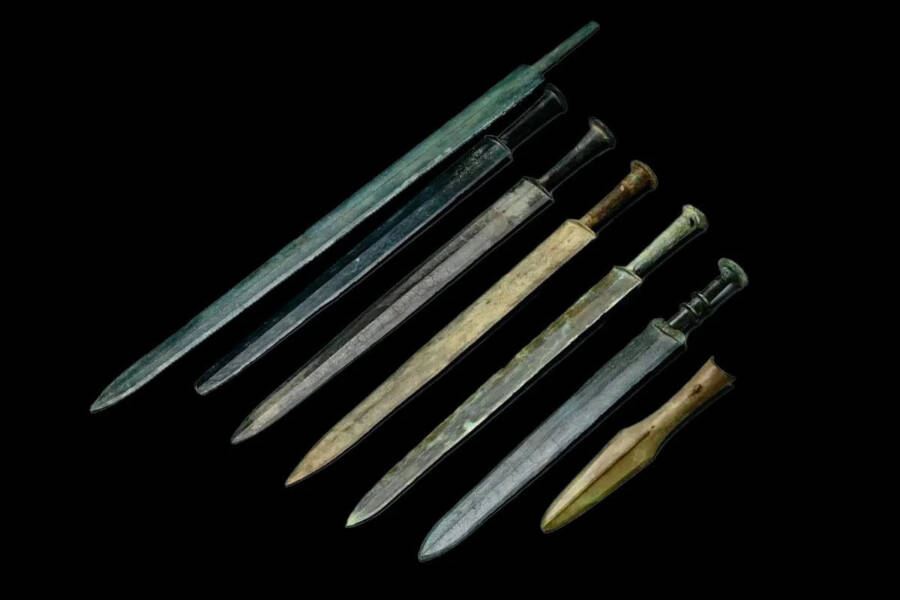Curiously, the researchers also uncovered a burial containing a chariot and the skeletal remains of two horses. Archaeologists are hopeful that their findings will reveal more about one of China's most influential historical periods.

Hubei Provincial Institute of Cultural Relics and Archaeology/Xiangyang Institute of Cultural Relics and ArchaeologyThe Baizhuang cemetery excavation site.
A team of archaeologists in Xiangyang, China just discovered a cemetery dating back to the country’s violent Warring States Period (475–221 B.C.E.). There, they also uncovered hundreds of relics spread across the site’s 176 tombs.
Now, researchers say these artifacts provide new opportunities to cultivate a better understanding of what life was like during this pivotal period of Chinese history.
Discovering The Ancient Cemetery
The archaeological project began in June 2023 as part of a larger infrastructure initiative. That month, archaeologists from both the Hubei Provincial Institute of Cultural Relics and Archaeology and the Xiangyang Municipal Institute of Cultural Relics and Archeology began excavating the Baizhuang Cemetery, a site located in Xiangyang City, Hubei Province.
There, the team identified 176 tombs, 174 of which dated back to China’s Warring States Period, an era of increased violence and conflict in which seven Chinese states battled for dominance.
According to a statement from the archaeological team, they also found over 500 artifacts, including swords, pottery, jade rings, wooden objects like combs, and a chariot buried alongside the skeletal remains of two horses. Of the 500 artifacts, around 400 are pottery — mainly ritual vessels.
Archaeologists designated nine of the tombs “medium-sized,” with the largest being tombs M1, M2, and M3; these measure more than 30 feet in length and more than 17 feet in width. The smaller tombs measure about 6 to 8 feet in length and 1.5 to 6 feet in width.
The horses were buried near M3, with their backs to each other and their heads facing north. In M3, archaeologists also found several swords and ritual vessels pointing to its owner’s likely status as a high-class nobleman. Researchers believe that the nearby M4, which is smaller than M3, may have belonged to his spouse.
Relics Lead To A Better Understanding Of The Warring States Period

Chinese Academy of Social SciencesA collection of bronze swords found at the site.
The site is located on the north bank of the Han River, historically an important waterway for trade. In 678 B.C.E., the area was claimed by the Chu state, one of the entities that would fight for supremacy in the Warring States Period.
Ultimately, seven ancient states fought during this time: Qin, Han, Wei, Zhao, Qi, Chu, and Yan. At the end of the period, the Qin prevailed, ending the Zhou Dynasty and beginning the Qin Dynasty, which would reign for the next 15 years as the first unified Chinese empire.
The relics at the site date back to the middle to end of the Warring States Period, giving researchers hundreds of new artifacts to study to better understand the regional culture of this era.
“The middle to late Warring States Period saw the political transition of this region from a previously autonomous polity by the name of Deng to a conquered territory under the expanding polity of Chu,” Glenda Chao, an archaeologist at Ursinus College in Pennsylvania who was not involved in the excavations, told Live Science.
Unfortunately, time has forgotten much about Chu culture and history — so much so that only a handful of words from the Chu language are known today.
Given that the Warring States Period is among the most influential periods in Chinese history, researchers are ecstatic at the opportunity to learn more about the Chu culture and funerary practices during this era.
After reading about the ancient Chinese cemetery, discover the story of the Terracotta Army, the clay soldiers that protect the First Emperor of China’s tomb. Then, view 34 photos of China’s uninhabited ghost cities.





